For a very long time, years even, the PMDG 737 NGX has been the most anticipated product for flightsim. PMDG finally released the NGX to the public early August, after a 3 year development cycle. Without further ado, I can tell you it was worth the wait!
The very first 737, a 737-100, took its maiden flight in 1967. The 737-100 was a small twinjet with a capacity of 100 passengers. It was slow selling initially, with only 30 ordered and delivered. But lengthening the fuselage and thus creating the 737-200, made the 737 family became one of the largest aviation successes in history. Over several upgrades and subversions, more than 2000 737-200’s were built. Building on the success of the 737-200, Boeing decided to upgrade it, introducing a the 737 ‘New Generation’ in 1984. Consisting of -300, -400 and -500 variants, this new generation brought a large number of upgrades to the 737 airframe, including new high bypass engines, new wings and new avionics. This new family was also a success, with almost 2000 airframes built over the several variants. When Boeing introduced yet another ‘Next Generation’ family of 737’s in the 1990’s, the -100 and -200 were referred to as the ‘Original Series’ and the ‘New Generation’ was rebranded to the ‘Classic Series’ of 737’s. The ‘Next Gen’ 737’s include the -600, -700, -800 and -900 variants, as well as some sub variants, business jet versions and military derivatives. It’s this last family that’s now covered by PMDG: the 737NG for FSX, hence, the NGX. The 737NGX basepack contains the 737-800 and 737-900, both with and without winglets.
Installation:
Installing the PMDG 737 NGX is very simple. After purchase, you will receive an email with a download link and a serial. The download package is quite large, just shy of 650 MB. After downloading, all you have to do to install is execute the installer, and follow the instructions on screen. The installer will install the PMDG 737-800/900 NGX Basepack. After that, it will run an installer for some Microsoft Runtime libraries, which are required if you want to run the NGX. If you already have those libraries, the installer will automatically detect them, so you don’t end up installing the same thing twice. Notice that you don’t need the serial key for the installation, but you do need to activate the product before you can use it. This is not difficult: the first time you run FSX after installing the NGX, a window will open that asks you for the serial. To successfully activate, your pc should be connected to the internet at that time. There were reports of activation issues for a small number of customers, but it worked perfectly fine for me. After entering the serial, and upon successful activation, you can immediately start using the NGX. Upon installation, you end up with just 4 new entries in your FSX aircraft selection menu. There’s one entry for each version, the 800 and 900, both with and without winglets. All 4 entries are in the PMDG house livery. To get more liveries, you have to download them from the PMDG website (or from other sites like avsim or flightsim.com for 3rd party repaints, ). Installing new liveries is very easy, as PMDG included a livery manager. I like this approach, not including any liveries but having them freely available from the website. By doing it that way, you don’t have to install any liveries you don’t like.
Exterior:
Two things I want to talk about in this section, as usual: exterior model and exterior textures. First, the model. In total, the NGX basepack (800-900) comes with 4 models: the 737-800 and the 737-900, both with and without winglets. The models are very, very detailed. Firstly, the overall shape is spot on. The model is very detailed, and the curves are smooth, so there are no sharp edges or angular tubes to be found here. Besides the overall shape, the model is also loaded with details. Vortex generators on the nose, tail and wings; flap and slat mechanism visible if you lower them; a very, very detailed landing gear, and even a quite detailed 3D cabin visible through the windows. The 3D model gets a top score here.
Next up are the textures. I’m not entirely as positive about the textures as I am about the model. PMDG covered the NGX in large texture files, reaching a resolution of about 300 pixel per meter. This means that 1 meter on the fuselage (real life length) is covered by no less than 300 pixels. Needless to say, this is a very, very high resolution, allowing for a lot of detail. However, I can’t shake the feeling PMDG dropped the ball here. They provided the opportunity for an amazing amount of details, yet they didn’t fill it in. I can’t stop thinking that, with the current PMDG artwork on the exterior textures, you’d hardly notice the difference if the resolution was just half of the current. Don’t get me wrong, compared to many other airliner addons, (especially PMDG’s own 747 and MD-11) you get a good looking exterior. The textures are ‘clean’, but not brand new, so the NGX doesn’t look like a factory new aircraft that hasn’t flown yet, but rather like and aircraft that’s very well maintained and often cleaned. Because of the high resolution, you can zoom in a lot, and then even some more, before you lose sharpness in the textures. The liveries themselves, the artwork representing the airlines, is good and accurate. So, the diffuse textures (the actual colors) aren’t bad at all, but their potential isn’t fully filled in either. Further, the specular map (reflection strength) is quite detailed. The bump mapping however, is nothing short of disappointing. I can only see 2 panels lines actually bumped on the fuselage, and I’m sorry to say it like this, but they look horrible.
So, what exterior do you get? In the end, you get a nice looking exterior, that is quite detailed. However, it could be better. There’s a lot of potential there, it’s just not used as it should or could, at least, regarding the textures. The model is exquisite.
Interior:
The interior of the PMDG NGX is gorgeous. The model is nothing short of amazing. Apart from the circuit breaker panel, everything is modeled in 3D. Every switch, every dial, every panel, every detail. Whatever part of the virtual cockpit you’re looking at, there isn’t a section that passed the modelers attention, or isn’t meant to be used. Whether you’re looking forward, upward, backward or down, you’ll be met with a detailed model. And the textures are there to support the model properly here. The NGX VC is covered in photoreal textures, meaning PMDG used photos to texture the NGX cockpit. However, they did it right. Photo pasting in FS rarely works out right, but this time it did. Obviously, they didn’t just paste pictures, they were edited and adapted etc. But anyway, this is a gorgeous VC. I think I can be clear on my opinion of the VC here: I think it’s a new benchmark for virtual cockpits in flightsim. Everything that comes after the NGX (and many things that came before) will be judged based on a comparison with the NGX. And I don’t think it’ll be surpassed very soon.
Animations and effects and lighting:
The animations on the NGX are as good as the modeling. Both exterior and interior, you get smooth and accurate animations. On the exterior they range from moving control surfaces and rolling wheels over detailed flap extension and retraction, to a good looking flexing wing. In the interior, you get moving dials, moving knobs and switches, windscreen wipers, and more like that. Very nice is that all switches move to their new position when activated, instead of just magically appearing in their new position without travel time, like some other add-ons do. Other animations worth noting are those custom controlled animations: opening doors, the optional retractable air stairs, a ground power, ground air start and ground air conditioning carts visible in the exterior,… The animations manage to bring that little extra to the modeling.
As far as I could tell, the NGX doesn’t come with any custom effects (at least in the sence that FSX calls them effects) apart from the lighting, so I’ll immediately skip to that section.
Lighting, is something that’s worth talking about on the NGX, both exterior and interior. Let’s start with interior this time. As you probably know, most FS add-ons have 2 stage lighting: on or off. This works for aircraft where the lighting works like that in real life, but in airliners it’s less perfect. The PMDG NGX does better though: not only does it have adjustable lighting, it has adjustable lighting for every subpart of the cockpit. For example, you don’t control captain panel and overhead lighting in the same place. The NGX represents this beautifully. Of course, it’s not perfect. For example, there’s no ‘flow’: the flood lighting from one panel doesn’t illuminate the edges of the next panel, as it does in real life. But let’s be honest, that’s just nitpicking. Fact is that this is the best VC lighting I’ve seen in FSX to date. So, top marks for PMDG once more.
The exterior lighting also deserves praise. PMDG chose to included the ‘Lotus Style’ exterior lights, so called because they were first used on the Lotussim L-39. What this means, is that the lights don’t depend on default FSX effects to light up the ground, but use a custom technique to not only light up the ground, but also the scenery. This is something default FSX cannot do. And PMDG didn’t only do this with taxi, landing and runway turnoff lights, but also with the position, strobe and beacon lights. So, whatever light you turn on at night, will not only be visible on the aircraft, but also on the scenery or ground around and under the aircraft. This deserves praise because they didn’t only implement it, but they also implemented it well. All this lighting combines to make the NGX an aircraft that’s really worth flying at night in FSX, even if it’s just for the great looks.
Panels:
I’m going to be straightforward here: I’m not a 2D kind of guy. I prefer the VC for flying. The only panel I use more in 2D than 3D is the CDU. That said, I did notice that the NGX has good panels. Well proportioned, clear and crisp, and very user friendly. Apart from that, they also look very good. 2D panels often end up looking dull and unrealistic, like they’re toys for children. The NGX does this better though, the 2D panels look almost as good as the VC: detailed, with wear, tear, dirt and shadows in them. I still prefer 3D, but you won’t be disappointed if you chose 2D. That is, you won’t be disappointed except for one thing: there’s no 2D throttle quadrant. As I stay in the VC, I don’t miss it, but reading up on the PMDG forum, there’s a lot of people who are missing this panel in 2D. For things like throttles (as far as you use your mouse for them), fuel cutoff levers, flaps and speedbrakes you either have to go to the 3D VC, or rely on keyboard shortcuts, if you don’t control them through hardware.
Systems:
Despite the good visuals, and the amount of detail anywhere else, the systems is the heart of any PMDG product, this is where they show what they really can do. And as expected, the NGX trumps any other FS add-on on this aspect. I’m planning more than one review on the NGX, so I’m not going into much detail here, but even so, this won’t be a short section. When we talk about systems in an FSX aircraft, there are always several different things to look at. First of all, you have the implementation of systems based on the real aircraft. But besides that, you also have the flightsim specific systems, like load and fuel managers and the like.
I’m starting with real aircraft systems, and to give you an idea on how detailed the NGX is: PMDG shipped the Boeing flight crew training manual (FCTM) and flight crew operations manuals (FCOM) with the NGX, instead of a custom written manual covering the systems. There are a couple of things that aren’t modeled or simulated, like the circuit breakers or ACARS, but apart from that, almost everything works. I’ll cover more systems in a subsequent review, but I’m going to briefly describe the most impressive systems here. The most visible feature, is the Head Up Guidance System (HGS) with the Head Up Display (HUD) in front of the captain. The HUD is fully collimated to the FS world, meaning what you see is what you get, without displacement error. Also, it focuses into infinity, like the real one. This means that when the pilot moves his head, the displayed information moves with it, and stays fixed relative to the outside environment, and not to the actual display mount. Several FSX add-ons come with realistic HUDs, but this is by far the best on any airliner add-on. There are several others, but those aren’t anything like this one. The only downside to the HUD is that the displayed information dissappears behind the glare shield if you turn the landing or taxi lights on.
Another noteworthy system is the pneumatic and air conditioning system. These are 2 different systems, but closely related and both very realistic. For example, you can’t start the engines when the packs are running, because the pneumatic pressure is too low in that case. Also, if you’re doing a crossbleed start, you have to throttle the running engine above idle to provide enough pressure to start the other one. And of course, pneumatic air is used for the air conditioning, so no bleeds on means no AC. That said, the NGX does simulate and monitor cabin temperature and pressure, so not having AC and pressurization running correctly will have its effects. The amount of detail on all systems is like this. The amount of hydraulic fluid in the reservoirs depends on what users are in what position, the pressure is dependent on what pumps are running, anti ice will affect related systems and engine performance, and it goes on like this. There’s nothing you can do on the NGX that doesn’t have consequences.
Two other aspects that can’t be forgotten, are the FMS/CDU implementation and the autoflight system. The flight management system, and it’s interface, the Control display unit, are the most detailed I’ve seen so far in FSX. I think you’d be hard pressed to find a page that isn’t simulated. Even the navigation performance page is simulated. And I mean simulated, it doesn’t just display random numbers, it works. So, the FMS/DCU implementation is very detailed, and also capable of prediction and following very detailed flightplans. Luckily, the autoflight system is just as capable. Once again, all modes here are simulated. From heading and altitude hold, over speed and altitude intervention, to LNAV and VNAV, and to finish, the autoland system with all its quirks. The entire autoflight system works really well, and is really detailed, down to the fact you can’t turn on the autopilot (command mode) just anytime: the aircraft has to be trimmed and the flight director should be centered. That said, there’s one downside to the autoflight system in the PMDG 737NGX: it doesn’t do turbulence. It’s stated in the manual, and I tested it in flight as well, the autoflight system really drops the ball when it encounters FSX turbulence. It’s a known problem and is caused by the very accurate PMDG autoflight programming and inaccurate FSX turbulence implementation, PMDG said. But even so, I think it’s a shame it doesn’t work in turbulence. But it’s all a matter of compromise I guess. PMDG didn’t want to compromise on system accuracy, so ended up against the FSX imposed limits, and had to compromise there.
I’m going to stop talking about systems here, but keep in mind that I didn’t touch anything in detail, and didn’t mention most systems at all, although they’re all very detailed and accurate.
Then we move on to ‘simulator systems’. Things of note here: customer options, payload and fuel managing, failures, custom animations and a panelstate save/load feature. Well, a lot of features, but no external applications, no pull-down menus, nothing that pauses FSX. Every single feature I named above is controlled through 2 custom menus in the CDU. It doesn’t matter whether you use 2D or 3D, captain side or first officer side, but it’s done through the CDU. You can load or unload fuel, per tank or in total, by exact numbers or in preset parts (1 third, 2 thirds or full). The same with payload: you can load and unload passengers and cargo by numbers, by presets or by percentages, and it’s all done in the CDU menus, and requires no reloading of the aircraft. Connecting or disconnecting ground equipment is done in the same fashion and place. The above actions happen in the ‘FS Actions’ menu. In the second one, the ‘PMDG Setup’ menu, you can save or load panel states (including FMS/CDU entries, IRS state and failures) or set a startup panel state. You can also set some options, which affect the entire NGX range, and you can set aircraft specific (per aircraft registration number) options. The general options cover features to customize your NGX experience. Things that come to mind are enabling service based failures, automatically synching Captain and F/O barometer settings, editing NGX specific key combo’s or changing the sound volume. But there are a lot more options, I named these so you can get an idea. The aircraft specific options cover things that are customer options in real life: whether you have the HGS installed, what MCP Panel you use, whether the aircraft is ETOPS certified, but also how your displays look, at what value default speeds bugs and heights are set, and a lot more. Finally, in the setup menu, you can set failures. There are a couple of ways the NGX can fail on you. If you enable service based failures, parts will fail depending on the flight time of that airframe. But you can also enable fixed failures, or enable an average amount of random failures. The essence of this section, is that it’s all controlled through the CDU menus, in real time. So you can change your aircraft on the fly, without it interrupting your flight.
Flight dynamics:
That brings us to the flight dynamics. An important part of any FS add-on. Considering the quality of everything I talked about earlier, it’s not surprising to say these don’t disappoint either. Of course I never flew a real 737, but I tend to go by instinct here. And I can say, it feels good. You can feel the NGX represents a large aircraft, but not a huge one. But of course, there’s more than feel. The performance I get out of the NGX is close to what’s stated in the manuals, in takeoff, climb and landing. Also, the FMS predicted values for trim and Vr are exactly what’s needed for a smooth takeoff. One thing I do notice is that the ground effect is very strong. This is particularly noticeable on landing. You hardly need any flare to get a smooth landing, and definitely less than stated in the manuals. Despite this, a convincing flight model.
Sound:
The PMDG 737NGX comes with a very nice sound set. Everything has it’s sound, but more than that, the intensity of all those sounds is also very realistic. For example, the APU can’t be heard from the cockpit. The engines can, but the amount of noise from that source is relatively low. By far the most noise in the cockpit comes from the recirculation fans. That said, everything does have its sound. Every switch, every knob, every function. Actuating a switch in the VC will make a specific sound. But there are a lot more noises available. The trims, for example, and most noticeable the elevator trim, with its big spinning wheel in the cockpit. But gear retraction or extension is also very audible. And in fact, that’s one of the finer touches which I really like: when the (spinning) nose wheels retract, you will hear them touch the snubbers and slow down. Note that the nose gear doesn’t have brakes. This is the first time I hear this addition in an add-on for FSX (but I haven’t tested them all, obviously). The level of detail PMDG poured into the model and the systems, comes back once more in the sounds. It really is the finishing touch.
Performance:
All this detail comes at a cost. The 737 NGX isn’t a very light add-on, so don’t expect it to run as smoothly as the FSX Cessna 172. However, despite being so gorgeously detailed, the performance hit the NGX imposes is not worse than most other airliner add-ons. The best products to compare it with are other PMDG aircraft. The NGX does slightly worse than the MD-11 on my system, and about the same as the Jetstream 41. I tested this on a default FSX airport, but in bad weather. To compare it to other airliners, the Ariane 737 and Aerosoft Airbus X do slightly better, while the Captain Sim 757 does slightly worse. Note though, that I’m talking about performance in the virtual cockpit here. Performance in the exterior views is better than in the VC, but not dramatically better. But since I only use the exterior views for screenshots, I don’t care too much about performance there, as long as it’s not a slideshow. But to give you an idea, I get on average 3 or 4 FPS more in the exterior, compared to the interior. On the 20 FPS I get on average (in the describe situation, on the ground, systems running, default airport but bad weather), that’s a 15 to 20% increase.
About this review:
Before you ask, yes, I am aware of the fact that a service pack is just about to be released (planned at the end of this week). As my review was well underway before the final timeframe on the SP1 was announced, I decided not to wait, and publish now. If I’d waited, I’d had to restart testing the aircraft, something I don’t take lightly, and the review would be delayed by a significant amount of time. If significant alteration is required, I can always update the review. So, here it is, the NGX review.
Another reason I’m publishing now, before the SP, is because I’m planning a series of reviews on the NGX. This is a first one, but I’m planning on a second one about the same product, and more reviews on expansion packs and related developments when they are released. By doing it this way, I can go more in depth in later reviews, while not having to wait in publishing this review. Also, I don’t anticipate major changes in the product, with ‘major’ meaning they alter the general feel of the product.
That said, I originally planned a short review first. If you managed to reach this section of the review, you already noticed I didn’t stick to that plan. At over 4000 words, this review isn’t short at all. Still, I haven’t covered every aspect of the NGX, and didn’t do justice to some I did mention. However, you should get a good picture of what this add-on is all about.
Conclusion:
The Precision Manuals Development Group Boeing 737 NGX was long awaited and highly anticipated. Even so, PMDG raised the expectations with every statement they made about the NGX while in development. And yet, the product still managed to amaze me when I finally got my hands on it. The only thing about the NGX that hasn’t fulfilled my expectations is the texture quality. On everything else, PMDG raised the bar, and created the new benchmark for years to come. Any new airliner add-on to reach the market the coming years will be compared to this add-on, I’m sure of it. If you’re into airliners, don’t hesitate, buy this add-on. You won’t regret it! Flying the NGX can be very demanding, but only if you want it to. If you want to start FSX, and be flying within 5 minutes, that’s perfectly possible as well.
Like:
- Good visuals all-round, topped off with an outstanding virtual cockpit: a new benchmark
- Amazing system depth, yet also usable by people who don’t want to read the entire FCOM.
- Probably the most detailed sound set of any FSX add-on
- Considering the level of detail: good performance
Don’t like:
- I was expecting more from the exterior textures
- The autoflight system can’t handle turbulence
- For 2D fans: lack of a 2D throttle quadrant
Links:





















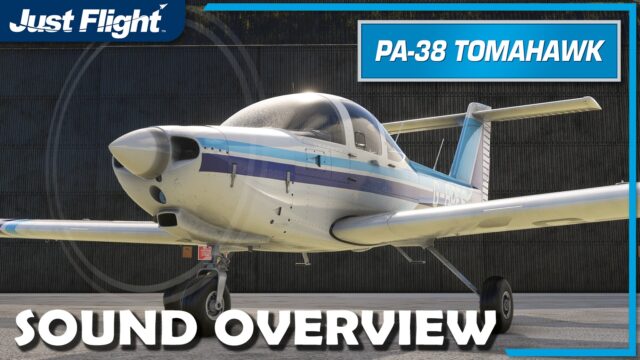
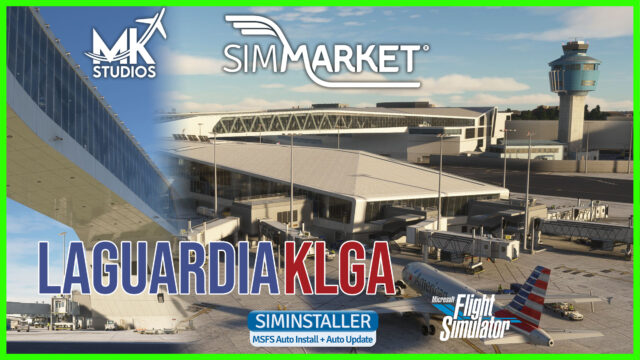
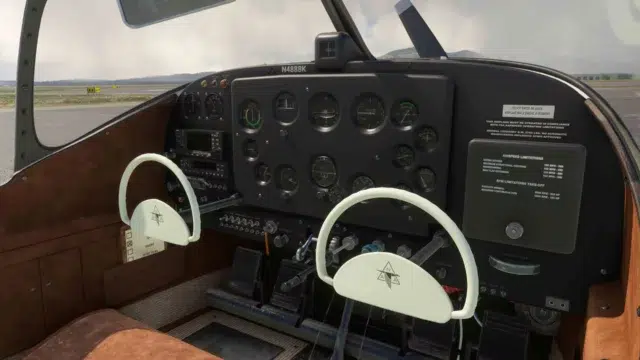
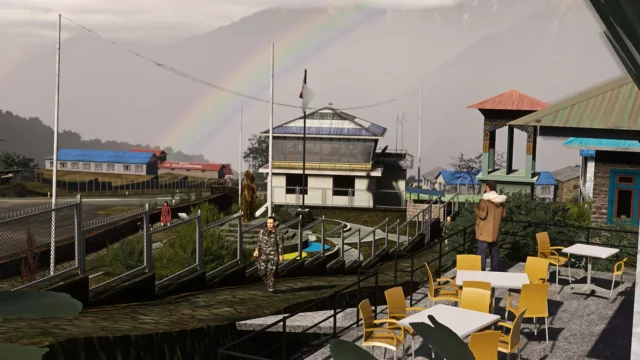
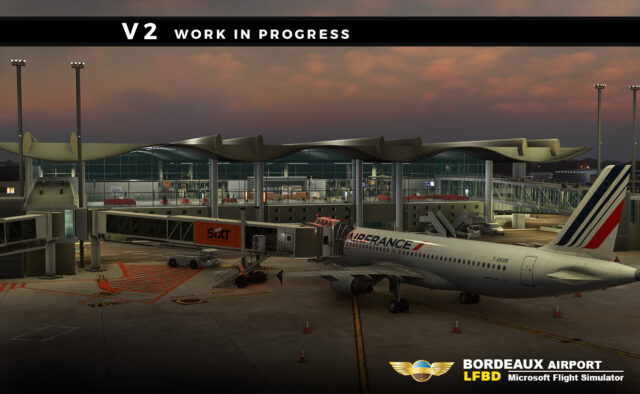
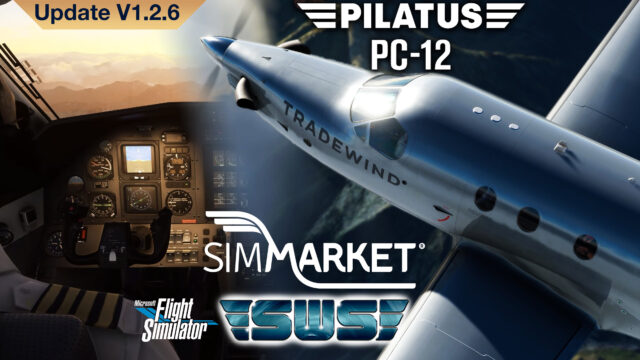
0 Responses
Thanks for the detailed look into this addon.
But I wonder if there’s something which forbids a statement about the current freezes and CTDs when it comes to this new PMDG plane, as stated by numerous customers in their forum.
Also, how detailed can the systems be when the developer needs four hotfixes to make it land like stated in the documentation?
Still, you can’t do a simple touch & go training with this 737 because the FMC forgets all the data, including all the weights.
So maybe a potential customer should wait for SP1 to come, to get rid of these obvious bugs and problems.
Per the above,
The poster above has latched onto a number of very small issues with an otherwise outstanding airplane – one that outshines any add-on on the market today.
His recommendation that people wait to purchase implies a buggy product that is does not deliver a satisfying experience. That could not be further from the truth. Users have already come up with a number of work-arounds for the approach angle question which the company is researching (many real NGX drivers flew the plane on beta), fixes for the validation and the freezes are moving forward. People flying the plane are enjoying it immensely, me included.
And I had installation issues and issues with ORBX scenery. But they were resolved with the good help of the PMDG support system.
Given the systems complexity of the aircraft, the age of the FSX code, the number of things that work compared to those that don’t, one has to take their hats off to the PMDG team. It is frankly an amazing accomplishment especially given the incredible number of systems out there (i7, Win 7, XP,etc).
I would suggest that it is an incredible accomplishment and there is no reason to wait for SP1
The vast majority of users have no issues with freezes and CTDs. Many CTD’s are related directly to ORBX scenery as well as overstressed systems. Their support has been extremely responsive.
Colin Ware
@ Jan: The system depth and detail is not related to how many hotfixes the aircraft needs. It’s a shame they need it, but be glad they released them, instead if just waiting for the large SP1 to fix anything. Anyway, I don’t know of any detailed software product to date that doesn’t need fixes or SP’s.
Also, the reason I didn’t mention the freezes and CTD’s is because I never experience them. The NGX runs very stable and very smooth on my humble system. Also, the current hotfixes available should have reduced the occurrence of both, for the people who do experience them.
@ Colin: Thank you for the constructive comment on the NGX.
However, I removed what you wrote about other add-ons. The comment section of this review (or any of my reviews, for that matter) is not the place to start bashing other dev’s products. You’re more than welcome to make constructive comments on the product reviewed, but please refrain from posting the kind of comments I just deleted.
Please don’t take this the wrong way. There are other and more appropriate places for that.
Thanks for your answer, Lars.
Visiting the forums is still recommended to get an own impression of bugs and flaws and their status.
We are talking about a non refundable 70 Dollar product, that’s what stressed the need in my eyes.
I think that mentioning the ongoing freeze and CTD problems wouldn’t have harmed the review’s outcome, if you’d added that you, personally, don’t experience them.
The fixes may therefore help or they may not, the latest one is currently labelled as beta and seems to act accordingly.
So far I couldn’t see a fix for that mentioned touch and go inability without losing the FMC data and I also couldn’t find one for the close to not usable ADF display or the problems with manual waypoints in the FMC.
While I would fully agree that the great VC optics are indeed a milestone on this plane, I think that it still aims at the enthusiast market, or at least tries to attract people with that label.
And with this in mind one may, currently, not always get what the system depth label promises.
My tenor is that a review of SP1 would have been the fairest way of reviewing such a detailed product. Fair for both sides involved.
Thank you for your input Jan,
I do appreciate it!
I hope that my viewpoints don’t sound too rude.
I’m a happy reader of almost every review around and I think that the amount of work going into them can’t be praised enough.
So please don’t read anything like bad review or something in my statements.